Sushi is a popular Japanese dish that has gained popularity worldwide.
It is a delicacy that is enjoyed by many, but it can also be a tricky dish to store and consume.
One of the most common questions that sushi lovers ask is whether sushi is still good the next day.
The short answer is yes, sushi can be eaten the next day, but it depends on how it is stored and the type of sushi.
The key to enjoying leftover sushi is to ensure that it is fresh and safe to eat. In this article, we will explore the different types of sushi and how long they can be stored.
We will also look at the risks of consuming leftover sushi and how to store it properly to avoid the risk of food poisoning.
Key Takeaways
- Sushi can be eaten the next day if stored properly and is still fresh.
- It is important to identify fresh sushi to avoid consuming bad sushi.
- The risks of consuming leftover sushi can be avoided by storing it properly.

How Long is Sushi Good for? Quick Answer
Sushi’s fridge life varies based on the seafood inside. To ensure the safety of sushi, follow these guidelines:
| Sushi Type | Room Temperature | Refrigerated |
|---|---|---|
| Raw Sushi (e.g., Sashimi, Nigiri Sushi) | Consume within 2 hours | Safe to eat for 1–2 days |
| Cooked Sushi (e.g., Eel, California Rolls, Maki Rolls, Inari Sushi) | Consume within 2 hours | Remains safe for 3–4 days |
Identifying Fresh Sushi
When it comes to sushi, freshness is key.
Eating sushi that is not fresh can lead to food poisoning and other health issues. Here are a few things to keep in mind when identifying fresh sushi.
Smell and Texture
One of the easiest ways to tell if sushi is fresh is by its smell and texture.
Fresh sushi should have a clean, ocean-like smell. If it smells sour or fishy, it is likely, not fresh and should not be eaten.
The texture of the sushi is also important.
The rice should be firm but not hard, and the fish should be tender and not mushy. If the rice is too soft or the fish is slimy, it is likely, not fresh and should not be consumed.
Quality of Ingredients
Another way to identify fresh sushi is by the quality of its ingredients.
Fresh sushi should be made with high-quality ingredients, including fresh fish, vegetables, and seaweed.
Seafood
When it comes to fish, look for bright colors and clear eyes.
Salmon should be a bright orange color, while tuna should be a deep red color.
Mackerel should have shiny skin and be firm to the touch.
Crab and shrimp should be firm and have a slightly sweet smell.
Vegetable
Vegetables, such as cucumber and avocado, should be firm and have a fresh smell. The seaweed used in sushi should be crisp and dry.
Sushi Rolls
Cooked sushi, such as shrimp tempura rolls, should have a crispy texture and a fresh taste. Raw meat, such as sashimi, should be fresh and tender.
In addition to the sushi itself, pay attention to the sides and fruits that come with it.
Ginger should be pink and have a slightly sweet taste. Wasabi should be a bright green color and have a fresh, spicy taste. Fruits should be ripe and fresh.
By paying attention to the smell, texture, and quality of ingredients, you can easily identify fresh sushi and avoid any potential health issues.
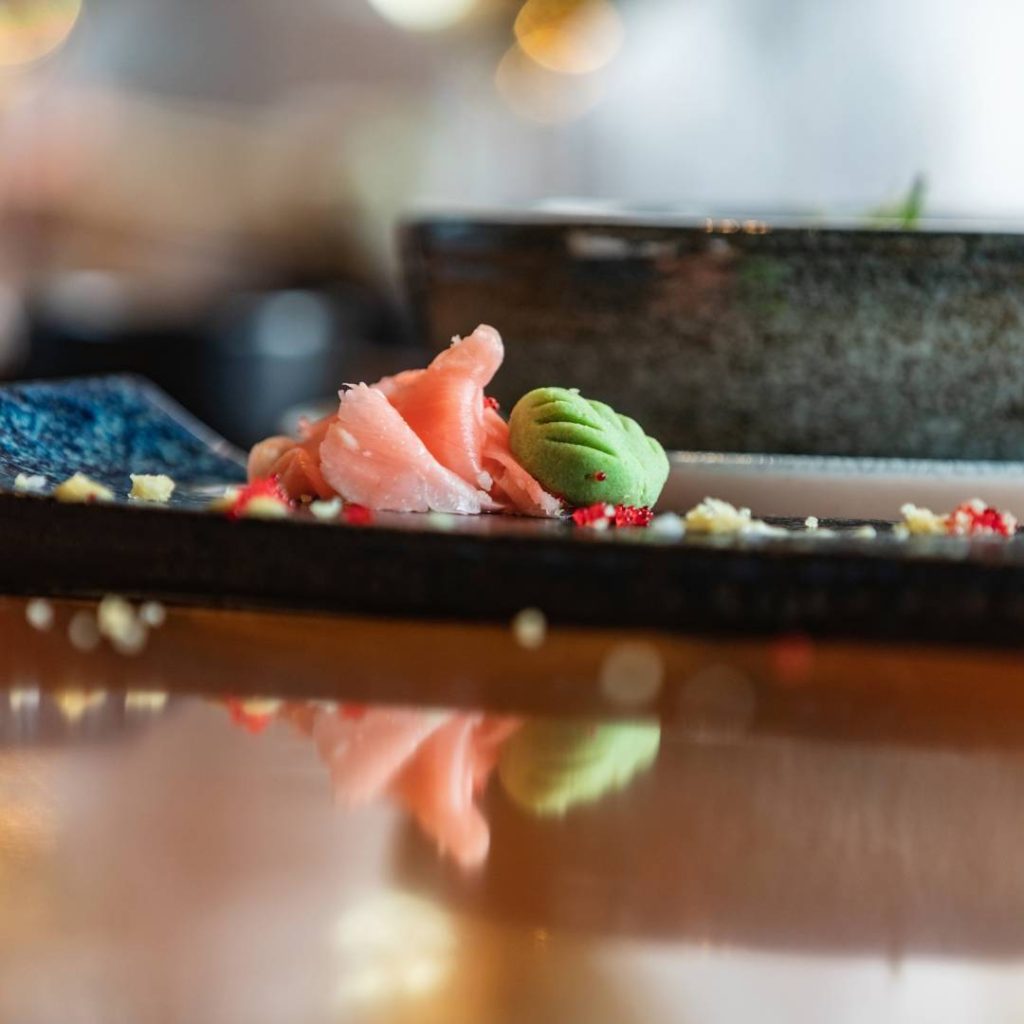
Risks of Consuming Leftover Sushi
Leftover sushi is a common occurrence, but is it safe to consume?
While it may seem harmless to eat sushi the next day, there are some risks associated with consuming leftover sushi.
In this section, we will discuss the potential risks of consuming leftover sushi.
Foodborne Illnesses and Parasites
One of the biggest risks associated with consuming leftover sushi is the potential for foodborne illness and parasites.
Raw fish used in sushi can harbor harmful bacteria, viruses, and parasites that can cause food poisoning and other health issues.
This is especially true if the sushi has not been stored properly.
To minimize the risk of foodborne illness and parasites, it is important to store leftover sushi in the refrigerator at 40°F or below and consume it within 24 hours.
Additionally, it is recommended to avoid consuming sushi that contains raw fish or meat if it has been left out at room temperature for more than two hours.
Mercury Content
Another potential risk associated with consuming leftover sushi is the mercury content.
Mercury is a toxic heavy metal that can accumulate in fish and seafood.
Raw fish used in sushi can contain high levels of mercury, which can be harmful to your health.
Consuming high levels of mercury over time can lead to health risks such as heart disease, neurological problems, and developmental issues in children.
To minimize the risk of mercury exposure, it is recommended to limit your consumption of raw fish and seafood and to choose sushi made with cooked ingredients instead.
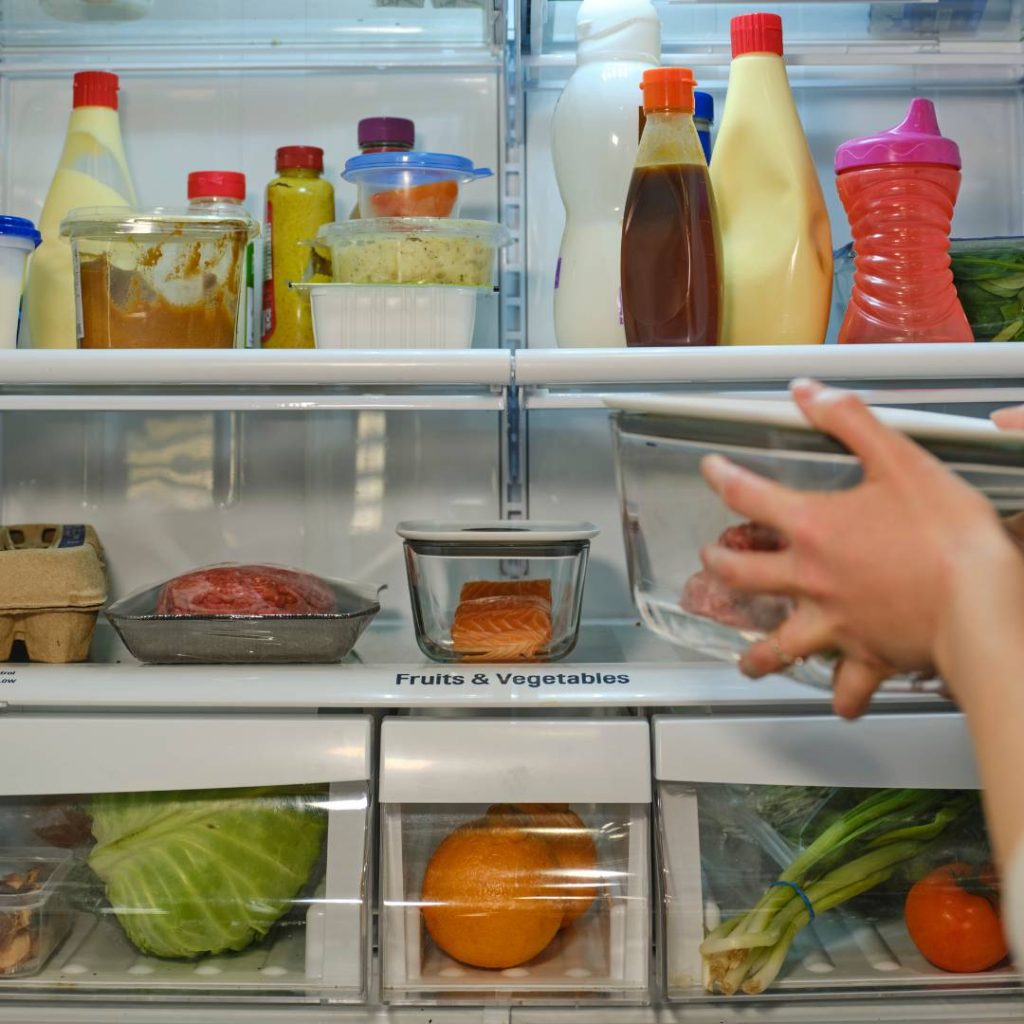
Storing Sushi Properly
When it comes to storing sushi, it is crucial to take the right steps to ensure that it stays fresh and safe to eat.
Proper storage can help extend the shelf life of sushi and prevent spoilage.
Refrigeration and Airtight Containers
Refrigeration is the most crucial factor when it comes to storing sushi.
Sushi should be stored in an airtight container or wrapped tightly in plastic wrap to prevent moisture from getting in.
Moisture can cause the rice to harden and the fish to spoil quickly.
If you have leftover sushi, it is best to store it in the refrigerator within two hours of making it.
Sushi stored in the refrigerator can last up to two days if it is stored properly.
To store sushi in the refrigerator, wrap it tightly in plastic wrap or place it in an airtight container.
Freezing Sushi
If you want to store sushi for a more extended period, you can freeze it.
However, it is essential to note that freezing sushi can affect its taste and texture.
To freeze sushi, wrap it tightly in foil or moisture-proof paper and place it in an airtight container. Sushi can be frozen for up to two months.
When you are ready to eat the sushi, let it thaw in the refrigerator.
Do not thaw sushi at room temperature as it can cause spoilage and bacterial growth.
Overall, it is crucial to store sushi at the correct temperature and in an airtight container to prevent spoilage and maintain its quality.
By following these simple steps, you can enjoy your favorite sushi even the next day or store-bought sushi for an extended period without compromising its taste or texture.
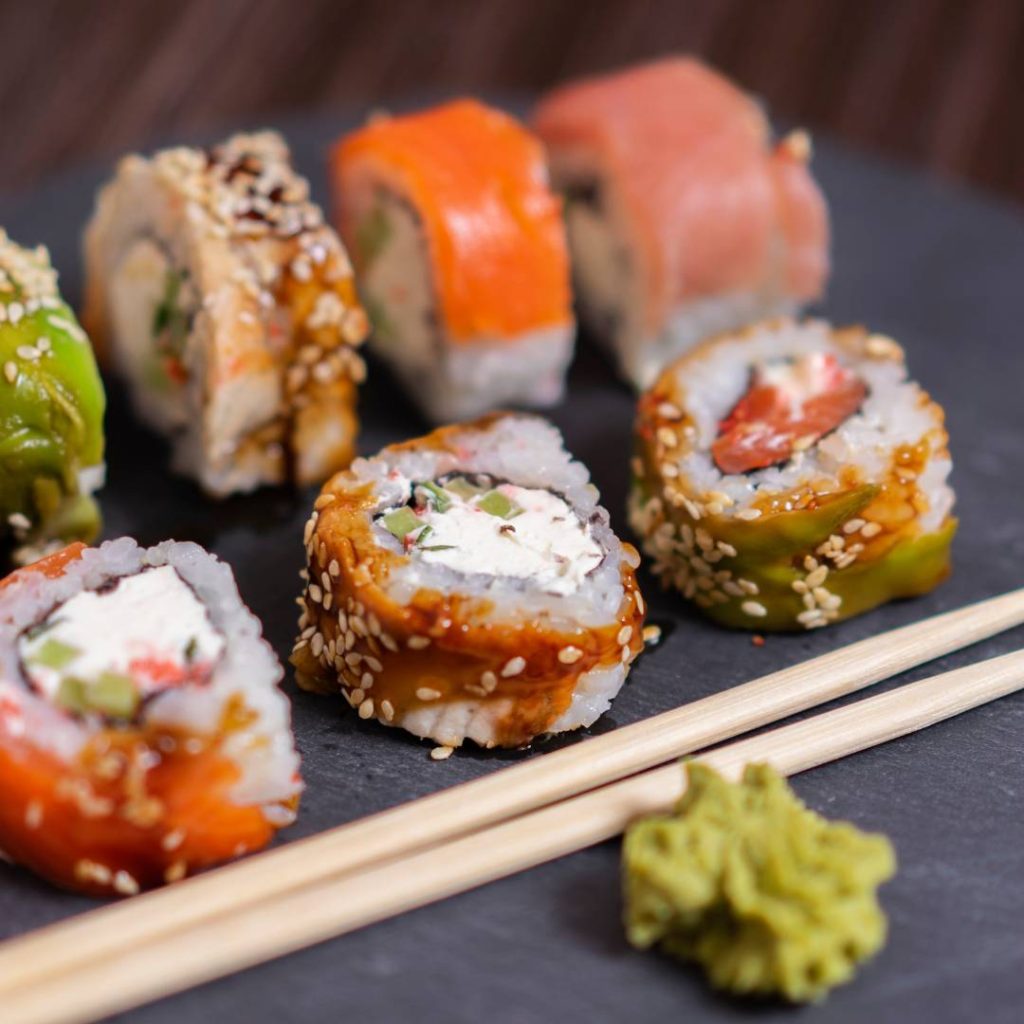
Eating Sushi the Next Day
Sushi is a popular dish that many people enjoy.
However, sometimes you may end up with leftover sushi, and you may wonder if it’s still safe to eat the next day.
In this section, we will explore the topic of eating sushi the next day, including changes in flavor and texture and health considerations.
Changes in Flavor and Texture
When you eat sushi the next day, you may notice that there are some changes in flavor and texture.
The sushi may have lost some of its moisture, which can make it feel dry and less enjoyable.
Additionally, the flavor may not be as fresh as it was when it was first made.
The sushi may also become mushy if it has been stored in the refrigerator for too long.
If you want to eat sushi the next day, it’s best to store it properly to minimize changes in flavor and texture.
You should store the sushi in an airtight container in the refrigerator.
You may also want to add a small amount of wasabi to the sushi to help preserve its flavor.
Health Considerations
When it comes to eating sushi the next day, there are some health considerations to keep in mind.
If the sushi contains raw fish, it’s important to eat it within the next 24 hours. Raw fish can spoil quickly, and eating spoiled fish can cause food poisoning.
If the sushi is vegetarian, you can store it out of the fridge since rice has a better texture when it isn’t in cold environments.
However, you should still eat it within a day or two to ensure that it’s still fresh.
While it’s generally safe to eat sushi the next day, there are some changes in flavor and texture that you may notice.
It’s important to store the sushi properly and eat it within a reasonable amount of time to minimize these changes.
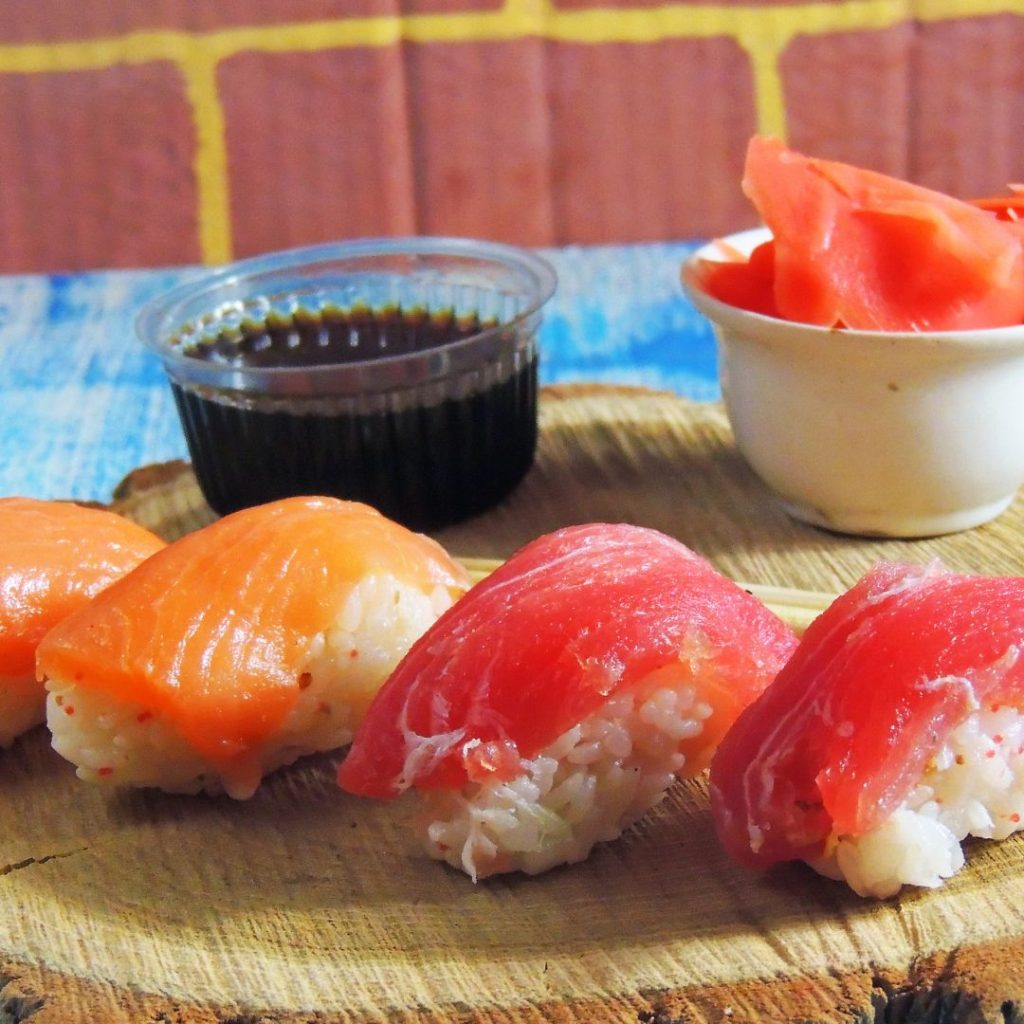
Types of Sushi and Their Shelf Life
When it comes to sushi, different types have varying shelf lives.
It is important to know the shelf life of different types of sushi to avoid food poisoning and ensure that you are consuming fresh and safe sushi.
Maki and Nigiri
Maki and nigiri are the most common types of sushi.
Maki rolls are made by wrapping seaweed around sushi rice and filling it with ingredients such as raw fish, cooked fish, vegetables, and more.
Nigiri is a type of sushi that consists of a small hand-formed ball of sushi rice topped with seafood or other ingredients.
When it comes to the shelf life of maki and nigiri, it is recommended to consume them within 24 hours of purchase or preparation.
If you are making homemade sushi, it is best to consume it within the same day. I
f you have leftover maki or nigiri, it is safe to consume it the next day as long as it has been stored properly in the refrigerator.
Cooked Sushi Rolls
Cooked sushi rolls, such as California rolls and tempura rolls, are made with cooked fish, vegetables, and other ingredients.
These types of sushi have a longer shelf life compared to raw fish sushi.
Cooked sushi rolls can last up to 48 hours in the refrigerator.
However, it is important to note that the shelf life of cooked sushi rolls can vary depending on the ingredients used.
If the sushi roll contains ingredients that spoil quickly, such as avocado or mayonnaise, it is best to consume it within 24 hours.
If you are unsure about the shelf life of your sushi, it is always better to err on the side of caution and consume it within the same day or discard it.
It is also important to store your sushi properly in the refrigerator to prevent the growth of bacteria.
Regulations and Recommendations
FDA Guidelines
The Food and Drug Administration (FDA) issues guidelines on the consumption of sushi to avoid foodborne illnesses.
According to the FDA, sushi made with raw fish should be consumed within 24 hours of purchase.
If the sushi has been sitting out at room temperature for more than two hours, it should be discarded.
Additionally, the FDA recommends that pregnant women, young children, and people with weakened immune systems should avoid eating raw fish, including sushi.
Furthermore, the FDA has issued a warning about consuming certain types of fish due to their high levels of mercury.
Swordfish, king mackerel, and shark are some examples of fish that are high in mercury and should be avoided or consumed in moderation.
Homemade Sushi
When it comes to homemade sushi, it is important to follow proper food safety guidelines to avoid food poisoning.
If you are making sushi at home, it is recommended to use fresh ingredients and store them properly.
Raw fish should be stored in the refrigerator at a temperature of 40°F or below.
If you are planning to eat leftover sushi, it is important to store it properly to avoid bacterial growth.
Leftover sushi should be stored in an airtight container and refrigerated within two hours of preparation. Sushi that has been left out at room temperature for more than two hours should be discarded.
It is also important to note that homemade sushi may not be as safe as sushi prepared by a professional sushi chef.
Sushi chefs undergo extensive training and follow strict food safety guidelines to ensure that the sushi they prepare is safe to eat.
Overall, following FDA guidelines and proper food safety practices when consuming or preparing sushi can help reduce the risk of foodborne illnesses.
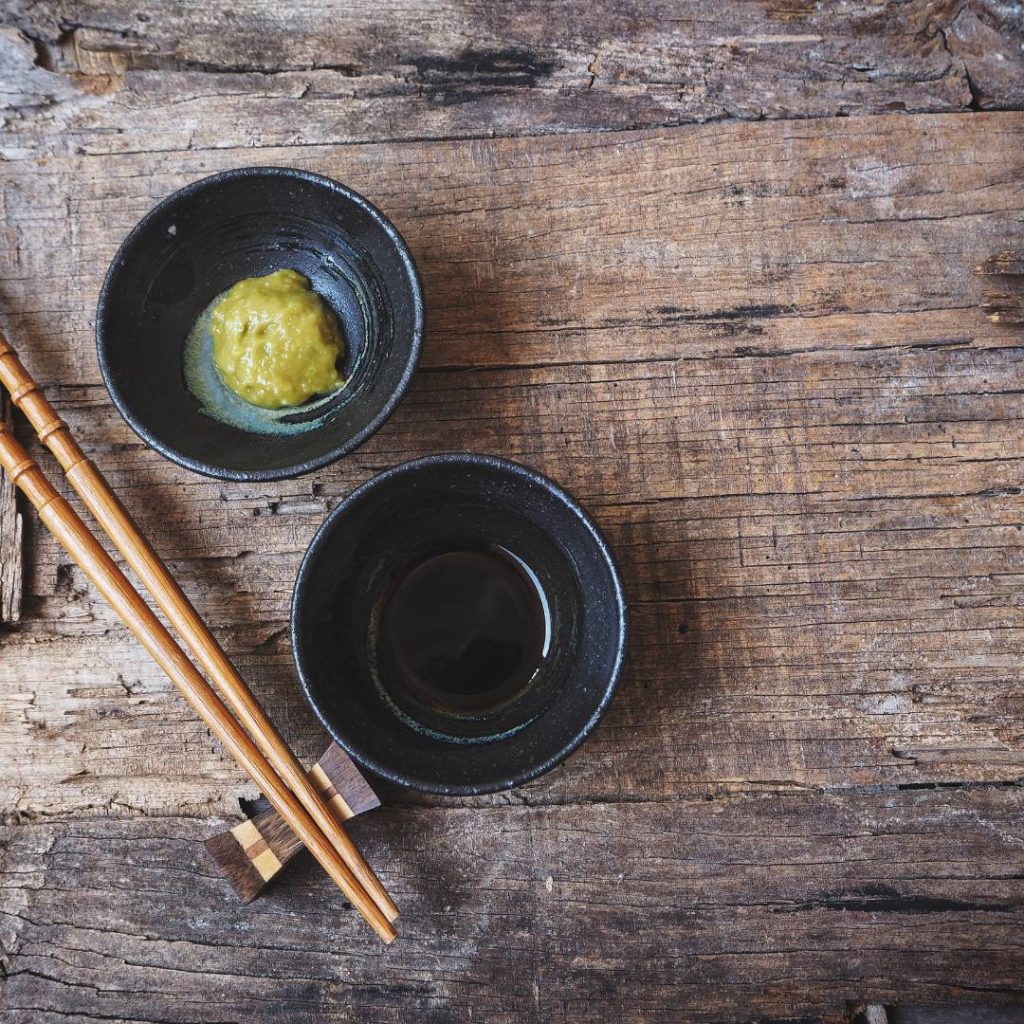
Sushi Condiments and Their Shelf Life
When it comes to sushi, the condiments that come with it can add an extra layer of flavor to the dish.
However, it’s important to know how long these condiments last to ensure that they are still safe to consume.
Here’s what you need to know about the shelf life of sushi condiments.
Soy Sauce and Wasabi
Soy sauce is a staple condiment that is often paired with sushi. It has a relatively long shelf life and can last for up to three years if stored properly.
Once opened, soy sauce should be kept in the fridge to extend its shelf life.
However, it’s important to note that soy sauce can go bad over time and develop a sour smell or taste. If this occurs, it’s best to discard it.
Wasabi, on the other hand, has a shorter shelf life than soy sauce.
It should be consumed within two weeks of opening, as it can lose its flavor and potency over time.
To extend the shelf life of wasabi, it should be stored in an airtight container in the fridge.

Konnichiwa! (Hello!) I'm Pat Tokuyama, a Japanese tofu cookbook author, who travels for music, food, and adventure. If you like Japanese tea, checkout some of the newestorganic japanese tea, matcha bowls and noren and more!
** Curious about the Plant Based Japanese Cooking Club? ** Learn more here!
Pickled Ginger
Pickled ginger is another common condiment that is often served with sushi.
It has a relatively long shelf life and can last for up to six months if stored properly.
Once opened, pickled ginger should be kept in the fridge to extend its shelf life.
It’s important to note that pickled ginger can change color over time, but this is normal and doesn’t necessarily mean that it has gone bad.
When it comes to sushi condiments, it’s important to pay attention to their shelf life to ensure that they are still safe to consume.
By following these guidelines, you can enjoy your sushi with all the right condiments without worrying about food safety.











Konnichiwa! (Hello!) I'm Pat Tokuyama, a Japanese tofu cookbook author, who travels for music, food, and adventure. If you like Japanese tea, checkout some of the newestorganic japanese tea, matcha bowls and noren and more!
** Curious about the Plant Based Japanese Cooking Club? ** Learn more here!